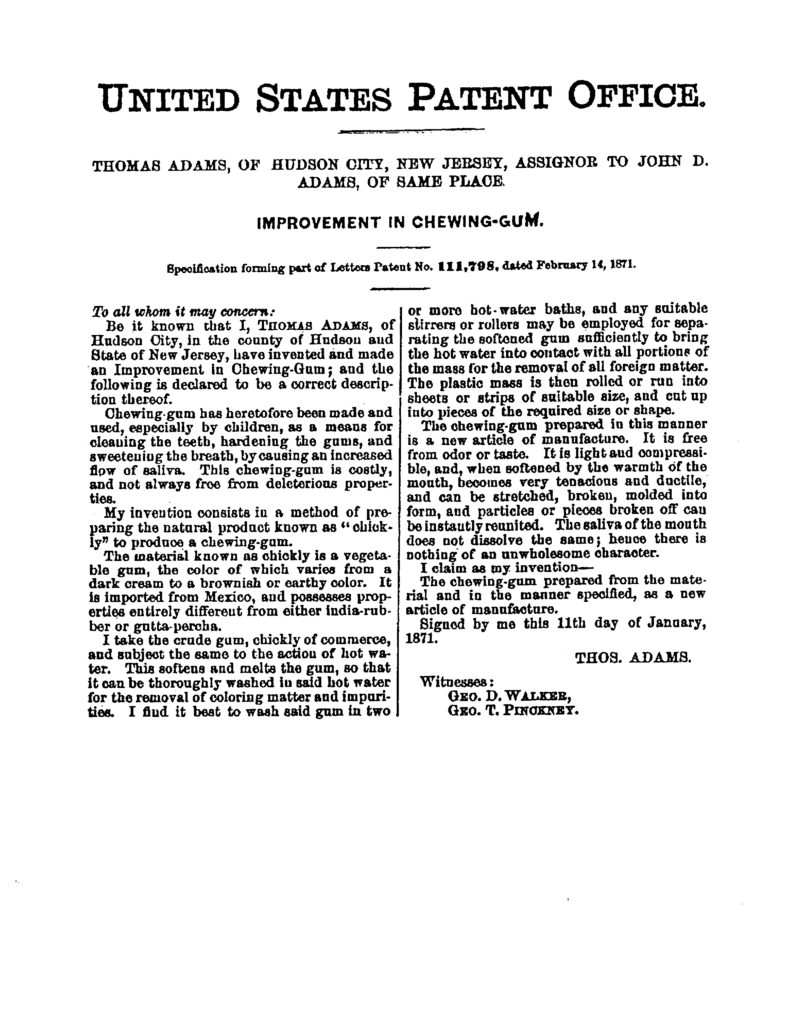On December 28, 1869, U.S. Patent No. 98304 issued to William F. Semple on Improved Chewing Gum.

Semple’s Chewing Gum contained rubber that not only formed an agreeable chewing gum, but also served as a dentifrice. It was never commercialized. The first commercially successful Chewing Gum was patented by Thomas Adams on February 14, 1871 (U.S. Patent No. 111798):

Chickly (chickle) a natural vegetable gum collected from several species of Mesoamerican trees in the genus Manilkara, including M. zapota, M. chicle, M. staminodella, and M. bidentata. This was the basis of the first commercially successful chewing gum.
Thomas Adams (May 4, 1818 – February 7, 1905) was a 19th-century American scientist and inventor considered to be a founder of the chewing gum industry. Adams worked as a secretary to former Mexican leader Antonio López de Santa Anna, who chewed a natural gum called chicle. Adams first tried to formulate the gum into a rubber for making tires, and when that didn’t work, he turned the chicle into a chewing gum called New York Chewing Gum. His first product was a licorice flavored gum called Black Jack.
































